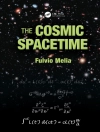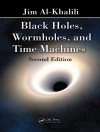Starting in 1995 numerical modeling of the Earth’s dynamo has ourished with remarkable success. Direct numerical simulation of convection-driven MHD- ow in a rotating spherical shell show magnetic elds that resemble the geomagnetic eld in many respects: they are dominated by the axial dipole of approximately the right strength, they show spatial power spectra similar to that of Earth, and the magnetic eld morphology and the temporal var- tion of the eld resembles that of the geomagnetic eld (Christensen and Wicht 2007). Some models show stochastic dipole reversals whose details agree with what has been inferred from paleomagnetic data (Glatzmaier and Roberts 1995; Kutzner and Christensen 2002; Wicht 2005). While these models represent direct numerical simulations of the fundamental MHD equations without parameterized induction effects, they do not match actual pla- tary conditions in a number of respects. Speci cally, they rotate too slowly, are much less turbulent, and use a viscosity and thermal diffusivity that is far too large in comparison to magnetic diffusivity. Because of these discrepancies, the success of geodynamo models may seem surprising. In order to better understand the extent to which the models are applicable to planetary dynamos, scaling laws that relate basic properties of the dynamo to the fundamental control parameters play an important role. In recent years rst attempts have been made to derive such scaling laws from a set of numerical simulations that span the accessible parameter space (Christensen and Tilgner 2004; Christensen and Aubert 2006).
Cuprins
to Solar Magnetism: The Early Years.- Solar Magnetism: The State of Our Knowledge and Ignorance.- Chaos and Intermittency in the Solar Cycle.- The Solar Dynamo.- Flux-Transport Solar Dynamos.- The Solar Dynamo: The Role of Penetration, Rotation and Shear on Convective Dynamos.- Advances in Theory and Simulations of Large-Scale Dynamos.- Planetary Dynamos from a Solar Perspective.- Observations of Photospheric Dynamics and Magnetic Fields: From Large-Scale to Small-Scale Flows.- Large Scale Flows in the Solar Convection Zone.- Photospheric and Subphotospheric Dynamics of Emerging Magnetic Flux.- The Topology and Behavior of Magnetic Fields Emerging at the Solar Photosphere.- Sunspots: From Small-Scale Inhomogeneities Towards a Global Theory.- Recent Evidence for Convection in Sunspot Penumbrae.- Helioseismology of Sunspots: A Case Study of NOAA Region 9787.- Small-Scale Solar Magnetic Fields.- Coupling from the Photosphere to the Chromosphere and the Corona.- Magnetic Flux Emergence, Activity, Eruptions and Magnetic Clouds: Following Magnetic Field from the Sun to the Heliosphere.- Coronal Holes and Open Magnetic Flux.- Solar Cycle Forecasting.- Coronal Magnetism: Difficulties and Prospects.- ISSI Workshop on Solar Magnetism: Concluding Remarks.












